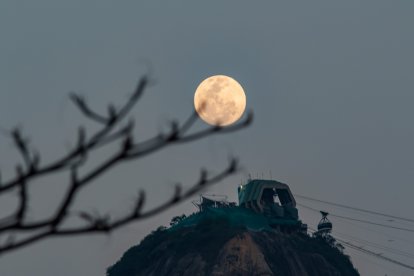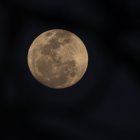A new blue supermoon arrives that will be visible in most of the United States
The celestial phenomenon will be accompanied by a partial lunar eclipse that will be visible in North America, South America, Africa and Europe during the night of Tuesday, Sept. 17 to Wednesday, Sept. 18.

This year's first blue supermoon, visible from Rio de Janeiro, Brazil, in August of this year
For the second time in a month, the moon will offer an unusual spectacle that will be repeated at least two other times in the coming months: the phenomenon known as a blue supermoon.
In this case, it will be even more special, and, as NBC News recalls, it will take place at the same time as a partial lunar eclipse which will be especially visible in North America, South America, Africa and Europe.
There, people will be able to witness first-hand how part of the lunar surface darkens as the Earth passes between the moon and the sun, which will cause part of the moon to be obscured by our planet's shadow.

Society
The blue supermoon, an astronomical phenomenon that can be seen on Monday night
Rosana Rábago Sainz
Known as the Harvest Moon (August's is called the Sturgeon Moon), this phenomenon will begin at 8:41 p.m. (EST). At that time, the moon will begin to enter part of the Earth's shadow but will still be difficult to glimpse. At least until, according to NASA, 10:13 p.m. (EST) when the lunar eclipse will be most visible.
However, the best time to view the eclipse will be at 10:44 p.m. (EST). Then, NASA assures, 8% of the lunar surface will be in the Earth's shadow. The phenomenon will occur 10 minutes after the moon becomes full at 10:35 p.m. (EST).
Then, the moon will begin to exit the Earth's shadow, ending the lunar eclipse around 12:47 a.m. (EST) on Wednesday, Sept. 18.
Humans will be able to see this phenomenon without the need to protect their eyes with special eclipse glasses. The next supermoons are predicted to happen on Oct. 17 and Nov. 15.
RECOMMENDATION





















